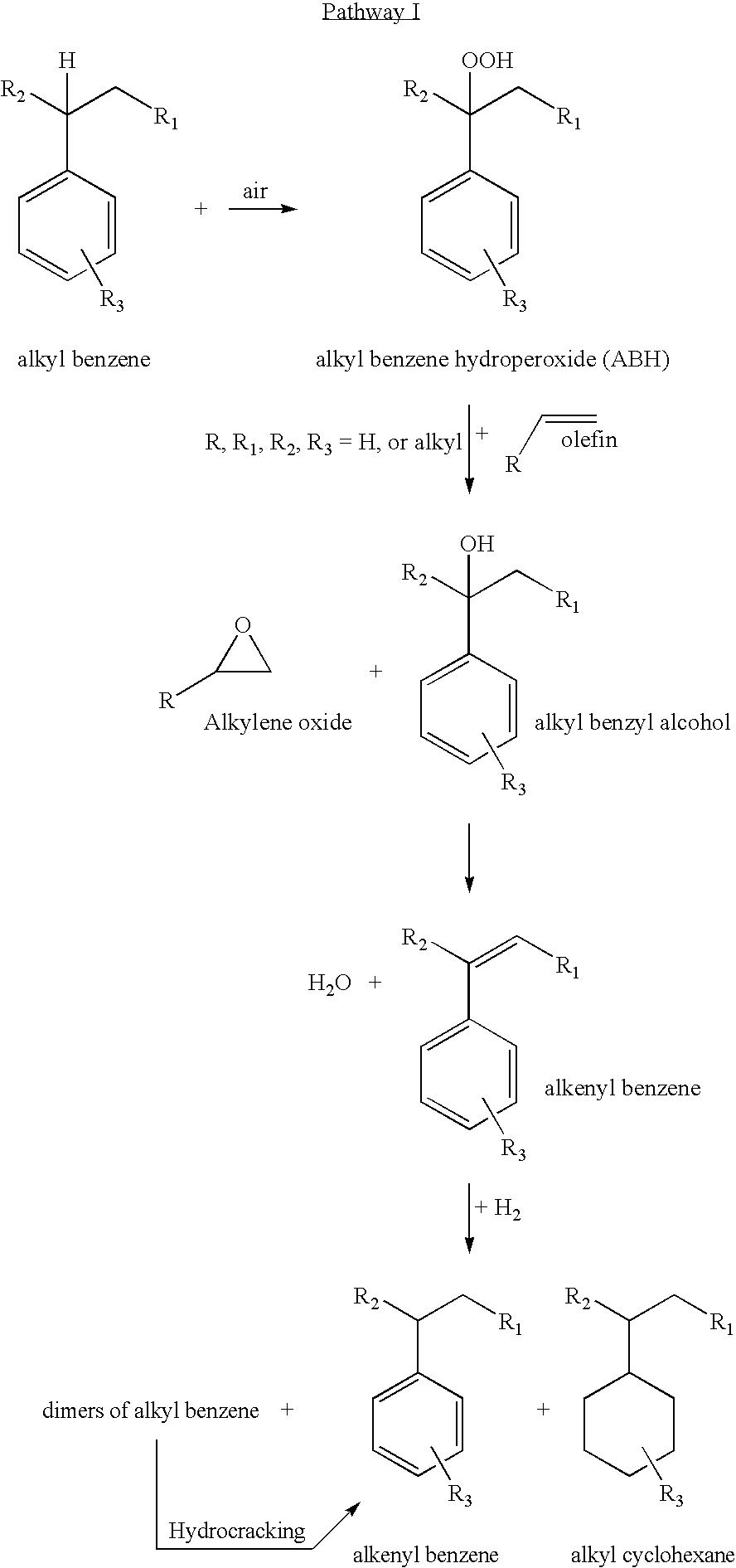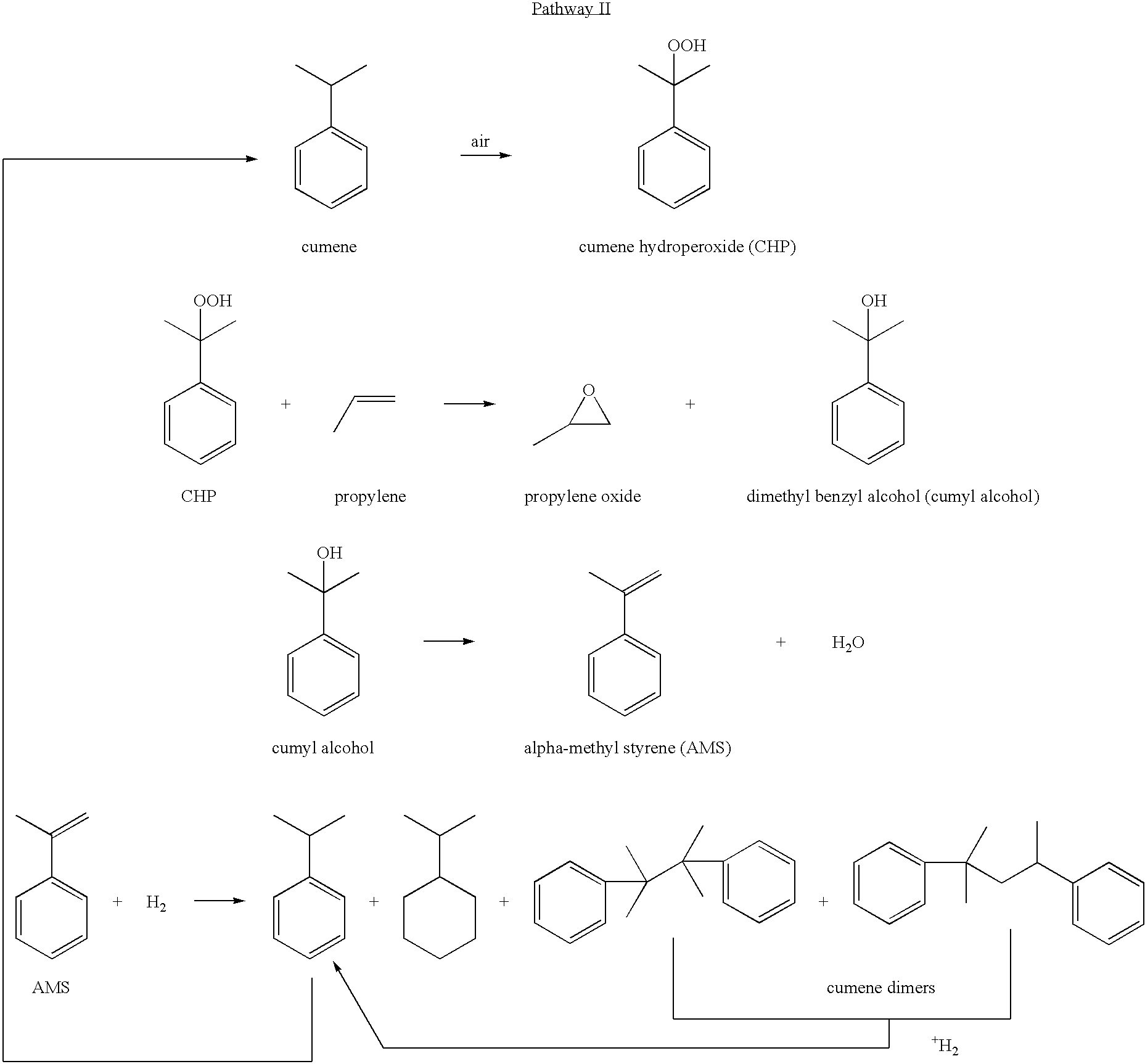Process for producing alkylene oxide
a technology of alkylene oxide and process, which is applied in the field of process for producing alkylene oxide, can solve the problems of undesirable production of i-propylcyclohexane and cumene dimer, and achieve the effects of reducing the production cos
- Summary
- Abstract
- Description
- Claims
- Application Information
AI Technical Summary
Benefits of technology
Problems solved by technology
Method used
Image
Examples
Embodiment Construction
[0018]It has now been found that the process of the present invention enables efficient epoxidation of an olefin by combining multiple process steps for converting alkylphenyl alcohol to alkylbenzene for reuse as an oxygen carrier, and also accumulates fewer undesirable side products of alkylbenzene, such as dimers / oligomers and alkylcyclohexane. Furthermore, as a particular embodiment of the present invention, dimers / oligomer of alkylbenzene produced during the process are cracked to alkylbenzene and recycled for reuse, and the loss of alkylbenzene is thereby minimized.
[0019]As represented in Pathway I below, the present process utilizes alkylbenzene hydroperoxide as an epoxidizing agent to produce an alkylene oxide from an olefin. The alkylbenzene hydroperoxide is converted to alkylphenyl alcohol during the epoxidation process, and the alkylene oxide is separated from the reaction product to obtain a residual product stream comprising alkylphenyl alcohol (also known as alkylbenzyl...
PUM
| Property | Measurement | Unit |
|---|---|---|
| temperatures | aaaaa | aaaaa |
| temperatures | aaaaa | aaaaa |
| pressures | aaaaa | aaaaa |
Abstract
Description
Claims
Application Information
 Login to View More
Login to View More - R&D
- Intellectual Property
- Life Sciences
- Materials
- Tech Scout
- Unparalleled Data Quality
- Higher Quality Content
- 60% Fewer Hallucinations
Browse by: Latest US Patents, China's latest patents, Technical Efficacy Thesaurus, Application Domain, Technology Topic, Popular Technical Reports.
© 2025 PatSnap. All rights reserved.Legal|Privacy policy|Modern Slavery Act Transparency Statement|Sitemap|About US| Contact US: help@patsnap.com


